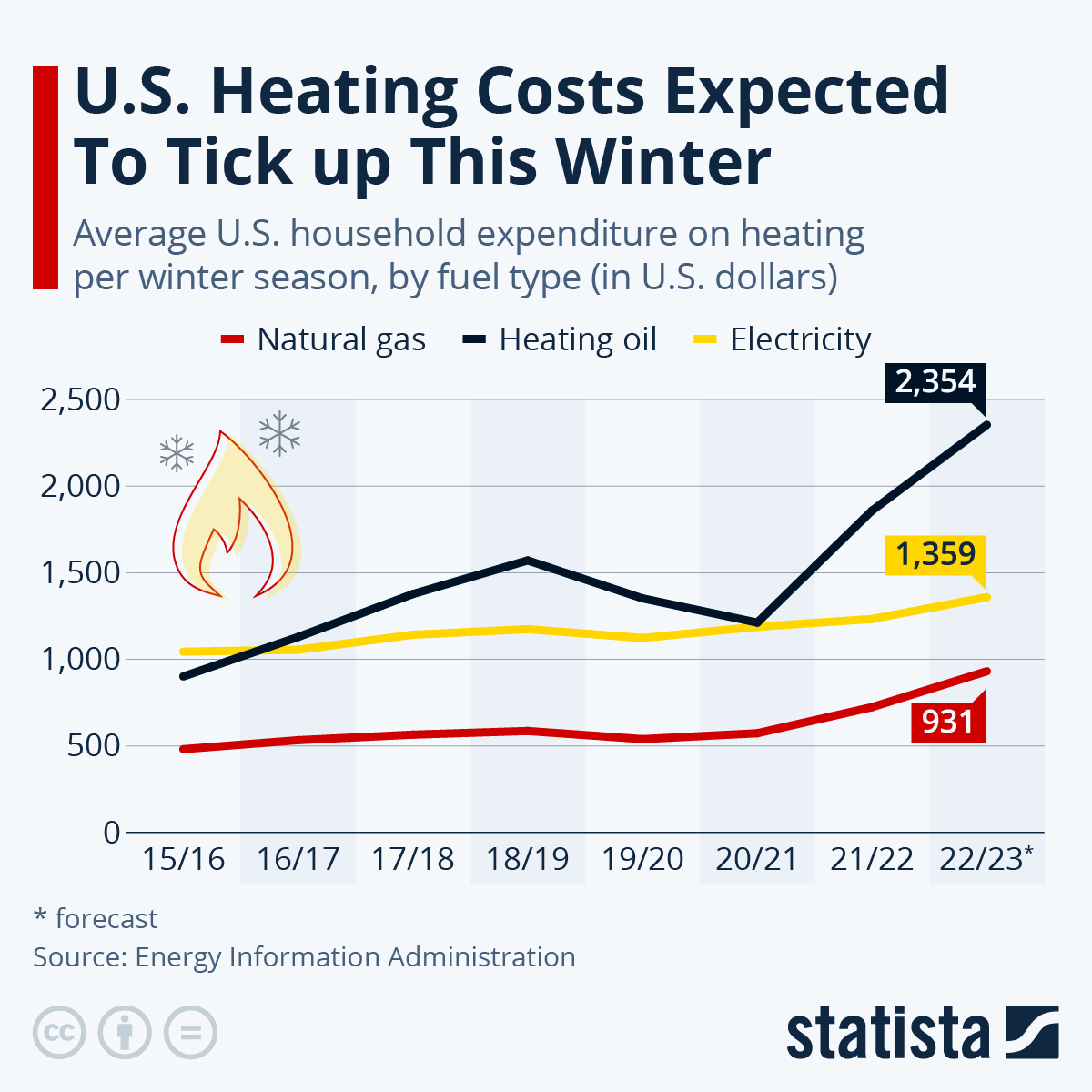SOURCE:
US Heating Costs Expected To Surge This Winter | ZeroHedge
A colder-than-average winter forecast and high energy prices will quite significantly raise heating costs for many U.S. consumers this winter, the Energy Information Administration reports in its Winter Fuels Outlook released Thursday.
As the invasion of Ukraine and embargoes against Russian energy products have caused turmoil on global markets, oil price fluctuations are being more immediately passed on to consumers, for example through gasoline or heating oil prices rising quickly.
Previously, heating oil consumers had experienced a big dip in cost due to the Covid-19 pandemic slashing global oil demand.
In the case of gas and electricity, longer-running wholesale contracts are delaying price swings hitting consumers with full force, even though quickly rising prices in the spot market (where providers can buy energy on short notice) have also caused prices to tick up.
As Statista's Katharina Buchholz notes, the forecast expects households that heat with oil or gas to experience an increase in cost of 27 percent and 28 percent, respectively, compared to 2021/22.
You will find more infographics at Statista
Those that heat with electricity – still the less cost-efficient option compared with gas – will experience prices rising by 10 percent, as electricity is generated from several sources, including but not limited to oil and gas. The report includes full regional breakdowns for gas and electricity heating, showing that gas heating households in the Northeast and Midwest are projected to pay $1,000-$1,100 for the season, while those in the West and South will shell out between $700-$800. For electric heating, costs are expected to hit $1,400-$1,700 in all regions but the South, where they will come in at around $1,250.
Average heating oil expenditures had already been higher in the U.S. as oil use is concentrated in the colder Northeast, where 18 percent of households use it as their primary heating energy. Overall, just 4 percent of the U.S. heats with oil. U.S. energy price increases are still moderate though compared to European markets, where the lack of Russian gas the continent normally relies on has led to an astonishing price rally on the gas and electricity spot markets.
